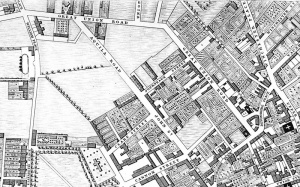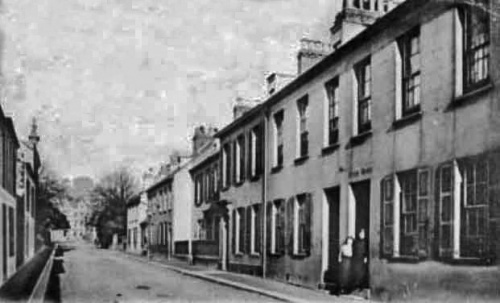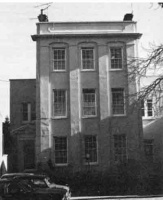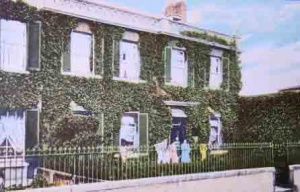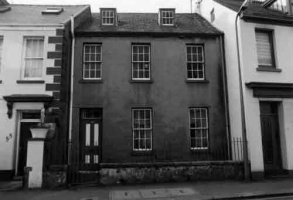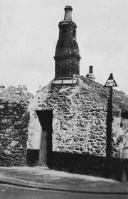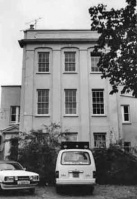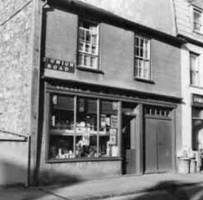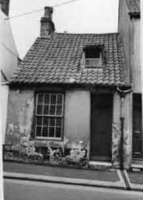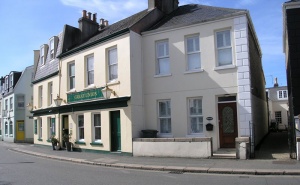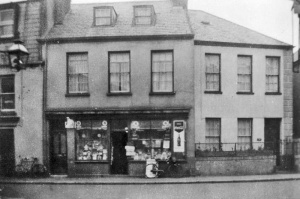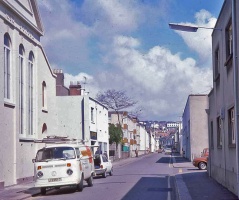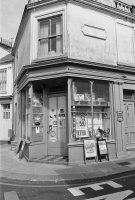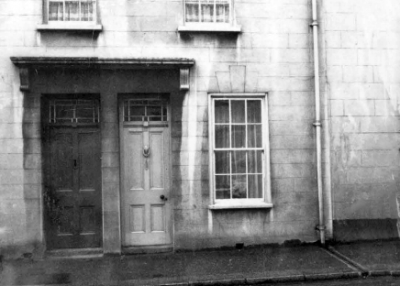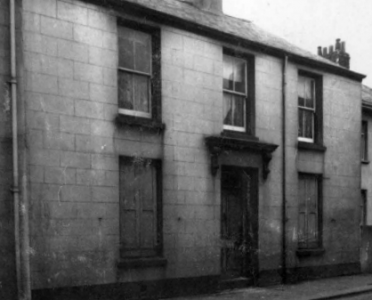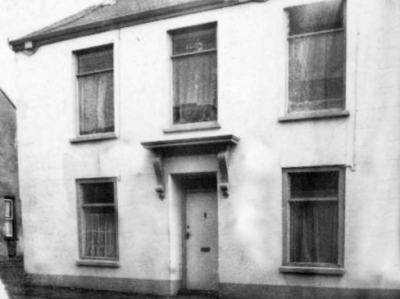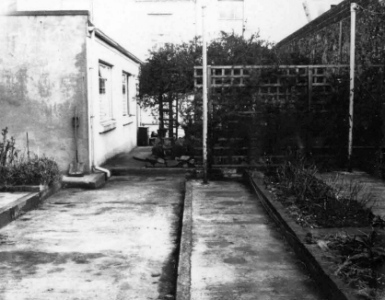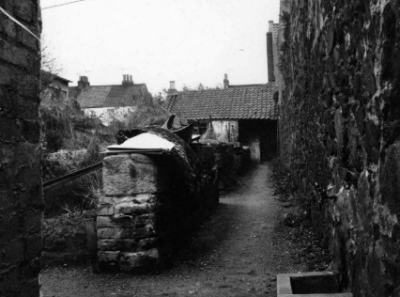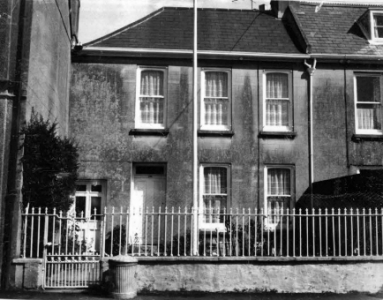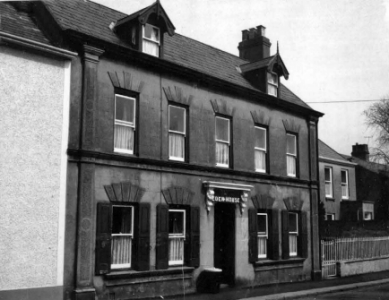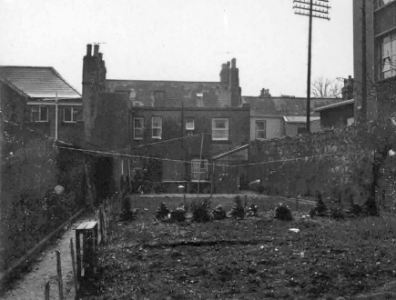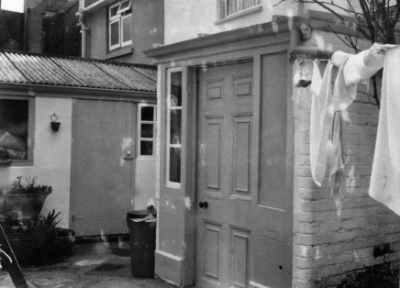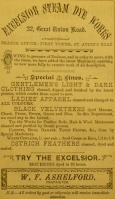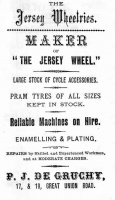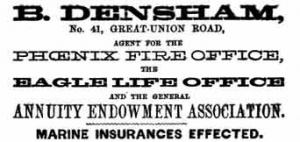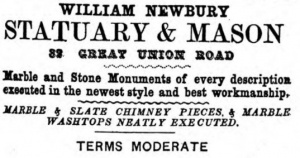The area of town encompassing Great Union Road and Aquila Road has seen great changes over the decades consistent with the modernisation and development of St Helier. What was originally a residential community of houses, churches and small family businesses now mainly consists of a mixture of modern blocks of flats and original houses, interspersed with commercial properties.
1826 contract
Property contracts reveal that this part of St Helier began to be developed in the early 1820s. A contract of January 1826 records Philippe Journeaux, Jean Simonet and Philippe Le Gallais buying Les Pres, a large property and area of land south of Journeaux Street, from Thomas Lempriere. They were key developers of this area of town, buying land and then selling it to builders such as Thomas Sohier, George Romeril, WIlliam Pearce and Thomas Le Breton.
The purchase of Les Pres was pivotal to this area being opened up for development. A further significant contract just two months later records an agreement between the three developers as to the establishment of roads between their existing lands and Les Pres. It is believed that Great Union Road was named as a result of this agreement.
Aquila Road is thought to have been named after the son of William Pearce Aquila, who was born in Jersey in 1830. William was another of the early builders and prominent developers. He was a Primitive Methodist who moved to Jersey in about 1808. He was involved in both the building of the Bible Christian Church in Great Union Road in 1826 and the Primitive Methodist Church in Aquila Road in 1839.
Youth club
The Bible Christian Chapel became the Great Union Methodist Chapel in 1907 and then in the 1960s was home to the Aquila Youth Club. The youth club was formed in 1947 with 16 founding members and was originally called the Thirteen to Twenty Club.
It provided a huge range of much-needed activities, including sport, drama and music, for the young people of St Helier. It closed in 1998 after 51 years and the Great Union Road premises were sold to the States the following year and the buildings were demolished.
The land was sold in 2006 to the Les Vaux Housing Trust, which built the flats called David Moon House on the site.
The Aquila Road Primitive Methodist Chapel was opened on 6 December 1839, within a short walk of the Great Union Road Chapel. When Primitive Methodism declined nearly 100 years later the chapel was renamed the Aquila Road Methodist Church. The congregations of Aquila Road and Great Union Road Churches eventually united to worship together in the Aquila Road Church in the 1960s.
In 1992 Aquila Road was renamed the St Helier Methodist Centre and the site refurbished and modified to include a youth centre and day nursery, opening in 2000. When this centre was relocated the Aquila Road buildings were sold in 2013 to the Muslim Welfare House for use as a mosque for Juma and Isha Prayers.
St Simon's Church
A third church built in this area was the Anglican Church of St Simon's. Prior to the building of the church in Great Union Road services were held in the Ragged School in Cannon Street and later in the Hotel de Ville in Don Street. However, in 1865 it was decided to finally put to use the legacy of £1,000 made by Jurat Charles Le Quesne, president of the Chamber of Commerce and author of the Constitutional History of Jersey.
In February 1865 land was purchased on Great Union Road and the church was officially opened on 30 November the following year. It was built by Fallaize and Tostevin and designed by the great church architect George Frederick Bodley, although it was never fully completed to his design as they ran out of funds.
St Simon's Parish School was opened in 1869, in a long room atht e back of 24 Great Union Road, with Emily Hitchin appointed as the first headmistress. With the need for larger premises, a school room was built on land to the north of the church in 1871 with money raised by the Rev J J Balleine.
Despite Balleine's constant efforts, the school struggled for survival, with school inspectors often complaining about the lack of space and rising numbers of infants and threatening to cut funding. On 31 January 1910 the school was closed and the pupils and teachers were transferred to Brighton Road Schools.
Other schools
This was not the only school in the area. In 1867 there was a private boys' school called Brompton Academy listed at 15 Great Union Road. Between 1863 and 1873 the Le Sueur sisters ran a girls' school at Moreland Lodge, 40 Great Union Road, which then became a small remand home for delinquent boys in 1945.
The 1861 and 1871 censuses record a school called the British and Foreign School at 12-20 Aquila Road, formerly Les Pres.
When the British and Foreign School closed due to lack of funding the trustees of the Chasnnel Islands Female Penitentiary, previously in Dumaresq Street, bought the property in 1876. It was to become the new home of the penitentiary, a charitable institution for fallen women who wished to better themselves and find gainful employment.
A donation box was built into the door on Aquila Road with a sign above which read 'Have compassion on us and help us'. The penitentiary took in work to employ and train the women, including doing the laundry for troops in the Green Street Quarters, which helped to cover some of the running costs.
Dispensary
Despite this income and donations from Guernsey and Jersey, the penitentiary struggleld to make ends meet and in April 1887 the premises were sold to the trustees of the Jersey General Dispensary.
The Dispensary and Infirmary had been operating from premises at 53 Bath Street but space restrictions had meant that urgently required improvements and expansion to this charitable institution were impossible. The Aquila Road site enabled it to afford more widespread medical aid for the poor of the district and to provide greater ward accommodation for the sick.
It continued to dispense its services by means of tickets of recommendation from subscribers and donors and persistent fund-raising for nearly 40 years. In 1926 the dispensary and infirmary moved out of Aquila Road to a new purpose-built propeprty in St Saviour's Road and the site was subsequently sold to St Clement's Housing Association, which built Aquila Close.
Planning Office photographs
These photographs were taken by planning officers in 1970 as part of an exercise to document old properties in a poor state of repair in the town of St Helier with a view to establishing how they could be rehabilitated

